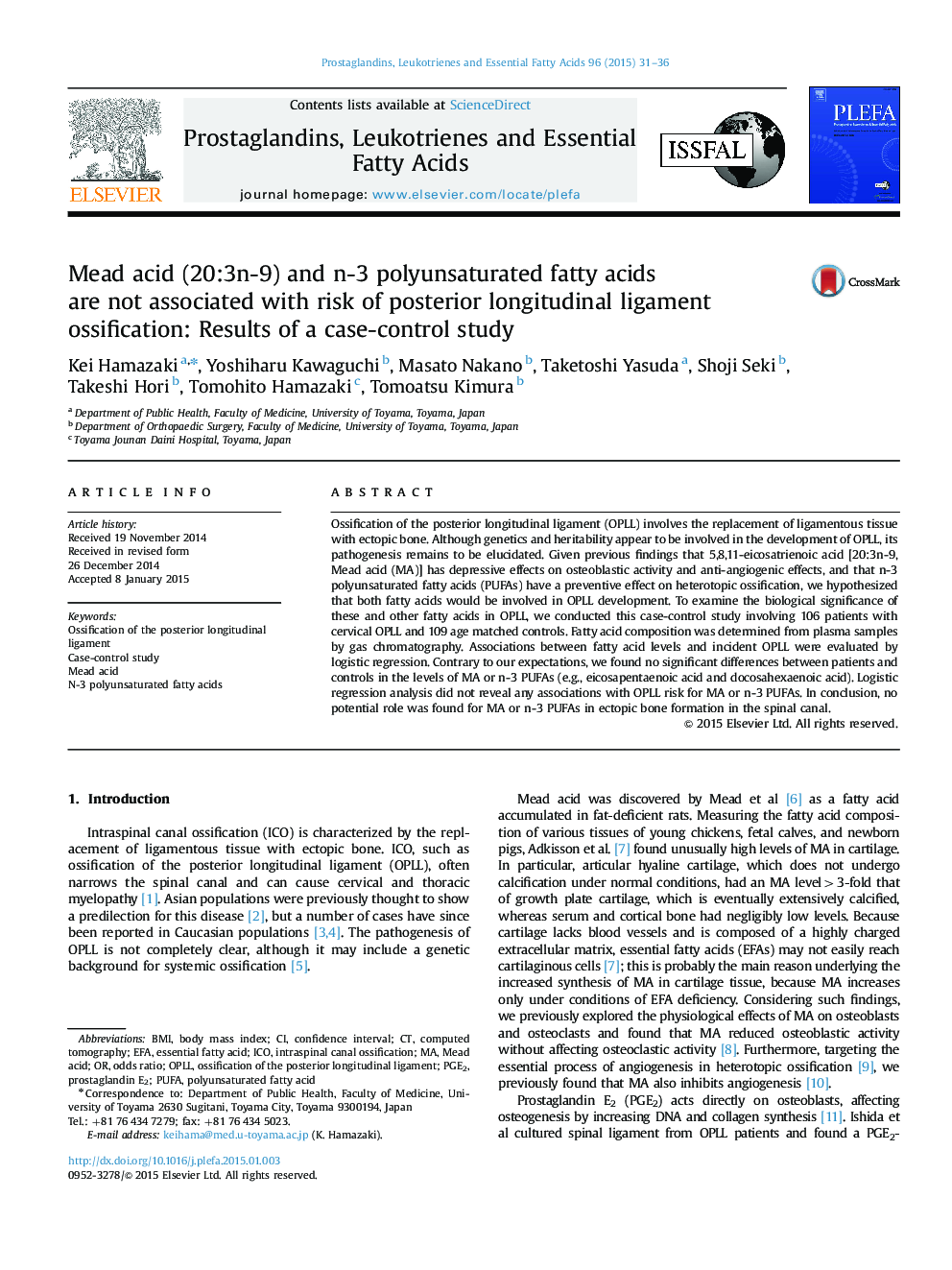| Article ID | Journal | Published Year | Pages | File Type |
|---|---|---|---|---|
| 5888453 | Prostaglandins, Leukotrienes and Essential Fatty Acids (PLEFA) | 2015 | 6 Pages |
Abstract
Ossification of the posterior longitudinal ligament (OPLL) involves the replacement of ligamentous tissue with ectopic bone. Although genetics and heritability appear to be involved in the development of OPLL, its pathogenesis remains to be elucidated. Given previous findings that 5,8,11-eicosatrienoic acid [20:3n-9, Mead acid (MA)] has depressive effects on osteoblastic activity and anti-angiogenic effects, and that n-3 polyunsaturated fatty acids (PUFAs) have a preventive effect on heterotopic ossification, we hypothesized that both fatty acids would be involved in OPLL development. To examine the biological significance of these and other fatty acids in OPLL, we conducted this case-control study involving 106 patients with cervical OPLL and 109 age matched controls. Fatty acid composition was determined from plasma samples by gas chromatography. Associations between fatty acid levels and incident OPLL were evaluated by logistic regression. Contrary to our expectations, we found no significant differences between patients and controls in the levels of MA or n-3 PUFAs (e.g., eicosapentaenoic acid and docosahexaenoic acid). Logistic regression analysis did not reveal any associations with OPLL risk for MA or n-3 PUFAs. In conclusion, no potential role was found for MA or n-3 PUFAs in ectopic bone formation in the spinal canal.
Related Topics
Life Sciences
Biochemistry, Genetics and Molecular Biology
Clinical Biochemistry
Authors
Kei Hamazaki, Yoshiharu Kawaguchi, Masato Nakano, Taketoshi Yasuda, Shoji Seki, Takeshi Hori, Tomohito Hamazaki, Tomoatsu Kimura,
